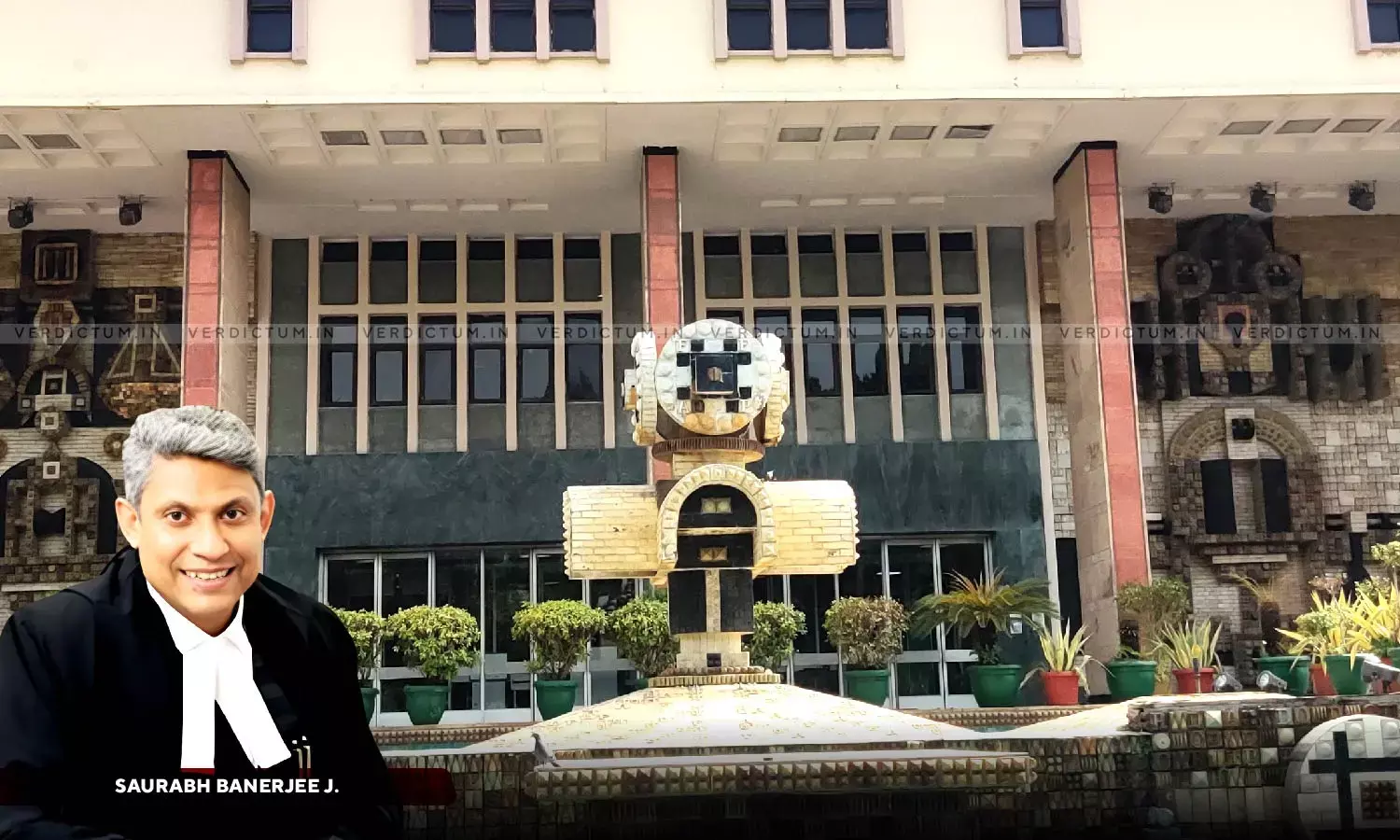Driving At ‘High Speed’ Does Not Always Mean ‘Rash And Negligent’: Delhi High Court Discharges Man Accused Of Killing Two Pedestrians
The Court noted that even if it was assumed that Petitioner was driving at a “high speed”, the same was not sufficient to conclude that the Petitioner was, in fact, driving the Car in a “rash and negligent” manner, which is a pre-requisite for conviction under Sections 297 and 304A of IPC.

The Delhi High Court has held that the pre-requisite to warrant conviction under Sections 297 and 304A of the Indian Penal Code, 1860 (IPC) is that the act must be ‘rash’ and ‘negligent’ on the part of the person who causes the death of any person or endangers human life.
A Single Bench of Justice Saurabh Banerjee observed, “…to constitute an offence under Section(s) 279/ 304A of the IPC, the act on the part of the person who causes the death of any person/ or endanger human life so as to cause, or likely to cause hurt or injury has to be a “rash” and “negligent”. To sustain any punishment/ conviction of any such person thereunder, it is pre-requisite that it has to be “rash” and “negligent”.”
The Court added, “The petitioner driving at a “high speed” does not/ cannot in itself always mean and/ or establish that he was acting in “rash and negligent” manner. Thus, even assuming that the petitioner was driving at a “high speed”, the same is not sufficient to conclude that the petitioner was, in fact, driving the Car in a “rash and negligent” manner.”
Advocate Siddhant Buxy represented the Petitioner, while the Additional Public Prosecutor Satish Kumar appeared for the Respondent.
Brief Facts
The Petitioner, who was employed as a cleaner with the owner of the offending car, was persuaded by friends to take them for a drive in the car. On the way back, Petitioner lost control of the car and hit two pedestrians, who were both declared dead on arrival at the hospital. It was alleged that after the accident, the Petitioner and his friends left the spot in a local bus, without helping the pedestrians.
A Fir was registered and a chargesheet was filed against the Petitioner under Sections 279 and 304A of the IPC, leading to his conviction by an order passed by the Metropolitan Magistrate (MM) who awarded the Petitioner a sentence of two years of rigorous imprisonment under Section 304A IPC and six months of simple imprisonment under Section 279 IPC, along with a fine of Rs.50,000/- to be paid to the families of each of the two pedestrians, in default of which he would undergo one month of simple imprisonment. The Petitioner challenged the order of the MM before the Additional Sessions Judge (ASJ), who upheld the conviction of the Petitioner, however, reduced his sentence from two years of rigorous imprisonment to eighteen months. Aggrieved, Petitioner approached the High Court challenging the order of the ASJ.
The Petitioner contended that the aspect of guilt of driving in a ‘rash and negligent’ manner had been wrongly inferred as the car being driven at a ‘high speed.’ He further submitted that driving at a ‘high speed’ did not in itself mean that the act was ‘rash and negligent’.
The Respondent submitted that testimonies of all the prosecution witnesses identified the Petitioner as the driver of the car, who was driving the car at a very “high speed” when the accident took place, and was sufficient to establish that the Petitioner was driving in a “rash and negligent” manner. He further averred that the car was not under the Petitioner’s control, since it led to the loss of two human lives.
Reasoning of the Court
The Court noted that all the witnesses in their testimony before the MM had deposed that the Petitioner was driving the car at high speed and had specifically denied that the Petitioner was driving the car in a rash and negligent manner, due to which it hit the pedestrians and sustained injuries. It observed, “…it emerges from the aforesaid depositions of PW1 to PW4 that though all of them deposed that the petitioner was driving the Car at a “high speed”, however, neither of them deposed that the petitioner was driving the Car in a “rash and negligent” manner. This Court, thus, does not find any evidence on record which reflects that the petitioner was indeed driving the Car in a “rash and negligent” manner.”
The Bench noted that to constitute an offence under Sections 279 and 304A of the IPC, the act on the part of the person who causes the death of any person or endangers human life so as to cause, or is likely to cause hurt or injury has to be a “rash” and “negligent”, to sustain any conviction of any such person thereunder.
The Court stated, “In any event, merely because the petitioner was driving at a “high speed” it cannot lead to the conclusion that there was any element of his being “rash and negligent”. The petitioner driving at a “high speed” does not/ cannot in itself always mean and/ or establish that he was acting in “rash and negligent” manner. Thus, even assuming that the petitioner was driving at a “high speed”, the same is not sufficient to conclude that the petitioner was, in fact, driving the Car in a “rash and negligent” manner.”
The Court further noted that the MM as well as the ASJ had overlooked the seizure memo and the mechanical inspection report which made it apparent that the car was in poor condition which could have caused the accident.
The Court held, “Succinctly put, there being an overall infirmity and unfilled lacunae in the case set up by the prosecution, the prosecution was not able to prove its case beyond reasonable doubt that the petitioner was indeed driving the Car in a “rash and negligent” manner, which resulted in the demise of the two pedestrians. Therefore, the necessary ingredients of Section(s) 279/ 304A of the IPC, not being fulfilled, neither of them are attracted. The petitioner, therefore, cannot be punished and/ or be held guilty of the offence(s) thereunder.”
Consequently, the Court disposed of the petition, discharging the Petitioner of the offences under Sections 279 and 304A of the IPC.
Cause Title: Manish Kumar v. State of NCT Delhi (Neutral Citation 2025:DHC:2169)
Appearance:
Petitioner: Advocates Siddhant Buxy, Rupinder Kaur
Respondent: Additional Public Prosecutor Satish Kumar


